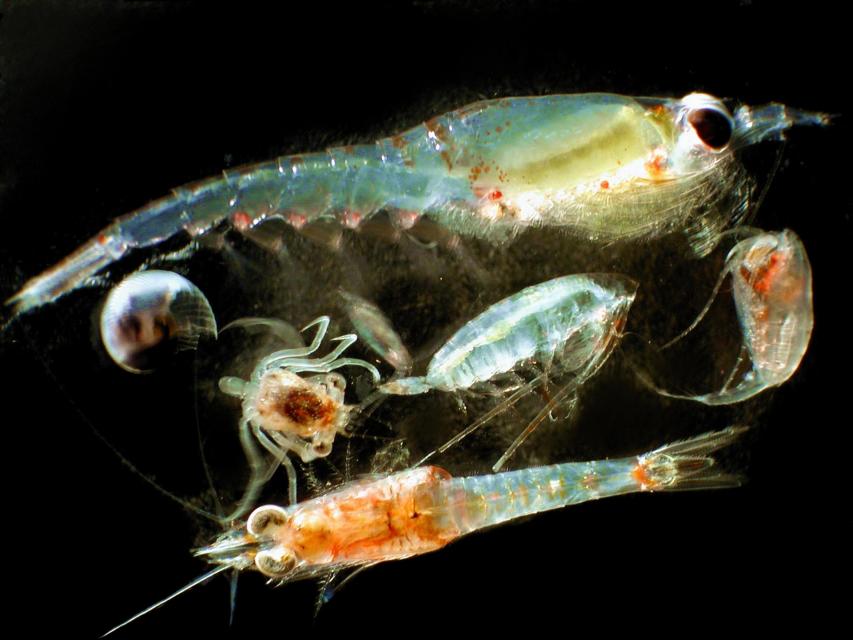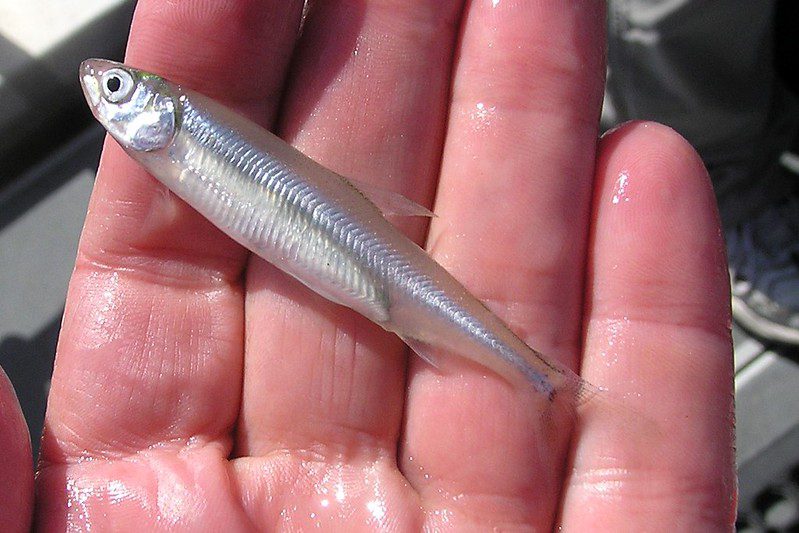Monday July 24, 2023

Estuaries are dynamic, productive ecosystems, with freshwater flow from rivers and salty input from the ocean continuously blended into a brackish soup by the push and pull of the tides., However, as humans have increasingly plumbed watersheds for the purposes of water storage, hydropower, and flood control, the dynamics of estuaries have shifted dramatically. This is particularly true in the San Francisco Estuary, which is fed by a watershed covering nearly 40% of California. Changes in freshwater flows resulting from dams and water withdrawal have significantly impacted this estuary and the species that rely on it, including those that occur nowhere else in the world like the threatened delta smelt (Hypomesus transpacificus). Current management efforts to conserve this species include fall flow augmentations, which involve adjustments to reservoir releases or water exports to increase the amount of freshwater that reaches the estuary. The increase in flow results in more low-salinity habitat available to delta smelt. To evaluate the potential effect this practice is having on prey resources for smelt, researchers conducted a study examining changes in the zooplankton community between years with and years without flow augmentation (Lee et al. 2023). Their recent publication shows that increased freshwater input does indeed lead to shifts in the zooplankton community, though the impacts this may have on delta smelt are not clear-cut.
In habitats at the interface of saltwater and freshwater, slight changes in salinity play a major role in determining the abundance and composition of plankton communities. In addition, the amount and composition of available food, like phytoplankton and zooplankton, greatly influences whether or not a habitat is suitable for animals that feed on these small critters. Therefore, even slight shifts or changes in plankton communities, which serve as the base of the food web, can significantly impact the entire ecosystem. In watersheds where human infrastructure and water use play major roles in determining the inputs to estuaries, understanding how shifts in salinity shape these biological communities is especially critical for developing strategies to protect the species that rely on them. This is particularly true in the face of climate change, which is having varying impacts on marine and freshwater ecosystems and complicating the already challenging task of estuary management.

As an annual species that requires productive, low-salinity habitats to complete its life cycle, the delta smelt is an indicator of successful management actions that seek to sustain a healthy estuary. Hatching in spring and early summer in the freshwater Sacramento-San Joaquin Delta, the smelt move downstream in the summer and fall, generally to areas with salinities between 0.5 and 6 practical salinity units or psu (for comparison, typical seawater is 35 psu). This preferred salinity aligns with the position of X2, a metric representing the distance from the Golden Gate Bridge to the location where salinity is a tidally averaged 2 psu. Fall flow augmentations push X2 further west into Suisun Bay and Suisun Marsh, with the intention of increasing delta smelt feeding habitat. Directly studying delta smelt is challenging given their scarcity, so the authors of this study analyzed the zooplankton on which they feed to evaluate the impacts of flow augmentation on prey resources. They evaluated zooplankton species composition and abundance in two years when flow augmentations occurred (2017 and 2019) and compared those data with data from two years when flow augmentations did not occur (2018 and 2020).
Analysis of zooplankton samples collected from across the upper estuary showed that in years when flow augmentation took place, there was significantly higher total zooplankton abundance and different community composition in Suisun Bay and Suisun Marsh. This included a notably higher abundance of the copepod Pseudodiaptomus forbesi – delta smelt’s most frequently consumed prey – in years with flow augmentation. This community change was likely driven by a westward shift of X2 into Suisun Bay and Suisun Marsh during years of flow augmentation. Notably, they also found that flow augmentation led to increases in turbidity, which may have helped delta smelt more easily evade predators and efficiently forage.
The finding that critical delta smelt prey items increase in downstream marsh habitats when flow augmentation occurs (and when X2 is further seaward) is significant for the management and conservation of this imperiled species. However, it is important to note that delta smelt abundance did not appear to respond to these increases in prey resources. This lack of increase in delta smelt may be due to the complicated, non-linear nature of food webs, negative impacts from invasive competitors, or high temperatures during 2017 that may have suppressed survival. The lack of direct connection between X2 management and improvements in smelt abundance echoes the findings of other recent studies and demonstrates the complexity of conserving this important species. Because of the numerous challenges and threats that delta smelt face, conservation efforts must use all available data to adapt and improve management actions.
This post was featured in our weekly e-newsletter, the Fish Report. You can subscribe to the Fish Report here.
